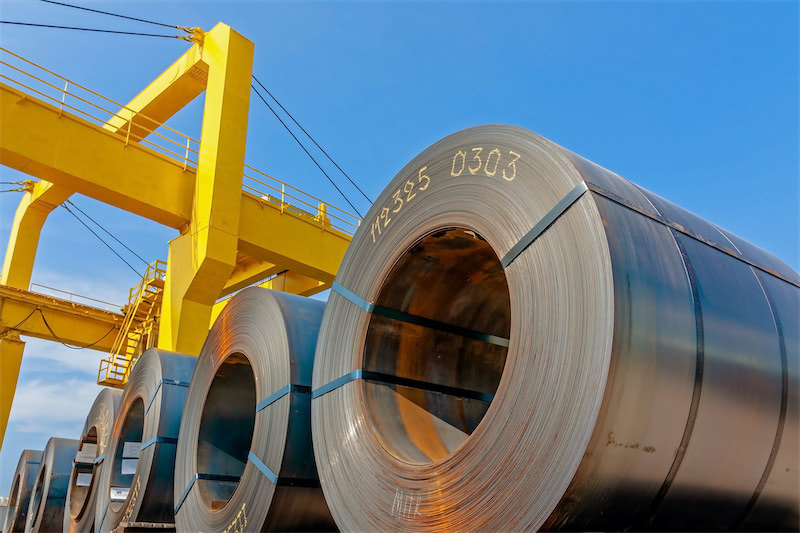






The "anti-rat race" policy continues to stimulate a rebound in the commodity market.
"Rat race" is considered a quantitative change without qualitative transformation, an intricate and complex process devoid of progressive significance, growth without development, and even the primary culprit behind socioeconomic stagnation and regression. The root cause of the "rat race" lies in too many people chasing relatively limited economic opportunities, leading to intense competition and ultimately harming economic development through excessive rivalry.
On July 30, 2024, the Politburo meeting first introduced the concept of the "rat race." After nearly a year of public opinion guidance and ideological preparation, the "anti-rat race" campaign has now officially commenced, which will reshape and revitalize China's economy over the long term. For the commodity market, which is closely tied to the macroeconomy, the response to the "anti-rat race" policy is more direct.
This "anti-rat race" initiative covers emerging industries such as NEVs, lithium batteries, and PV, as well as traditional cyclical industries like steel, coal, cement, and glass, where overcapacity has long been a prominent issue. Consequently, its impact on the commodity market is broad. Specifically, in industries where China already holds a global monopoly, such as PV, the "anti-rat race" measures are expected to be more forceful. In contrast, industries constrained by international competitive pressures may exhibit more caution in implementing such policies. The PV industry is likely to serve as a bellwether for the "anti-rat race" campaign.
The market widely perceives the "anti-rat race" policy as a potential prelude to supply-side structural reform 2.0 and a critical pathway toward economic rebalancing and reflation. However, compared to 2016, the current round of capacity reduction is expected to be milder, requiring simultaneous demand-side policy support. Currently, the policy emphasizes the orderly exit of surplus capacity in accordance with laws and regulations. From a macro perspective, China's economic data in H1 was strong, making additional stimulus policies unlikely under these circumstances. There are also no expectations of an export rush in H2.
The previous round of supply-side structural reform primarily addressed upstream overcapacity, whereas this round targets midstream manufacturing overcapacity. China's manufacturing sector now accounts for 40% of the global total and continues to grow at an annual rate of 9%. The resulting capacity pressure is already affecting the global market. A one-time supply-side shock alone will not suffice, as lingering pressures will persist. Therefore, the true upside potential for the commodity market hinges on demand-side improvements.
Currently, the commodity market remains in the first phase of policy-driven sentiment, with no fundamentals changes yet visible.
Targeted Policies Played a Key Role in H1 Economic Data
Against the backdrop of frequent tariff disputes and downward pressure on domestic demand, China's economy achieved robust growth in H1, with GDP up 5.3% YoY. Q1 and Q2 GDP grew 5.4% and 5.2%, respectively, laying a solid foundation for H2.
In Q2, investment growth declined month by month, with infrastructure, manufacturing, and real estate investment all slowing down. June marked a recent low, and private investment also pulled back due to the drag from real estate. From January to June, the cumulative YoY growth rate of fixed-asset investment was 2.8%, down 0.9 percentage points from January-May period, reaching the lowest level since 2021. On a seasonally adjusted MoM basis, fixed-asset investment in June declined again (-0.12%), underperforming seasonal trends. Structurally, infrastructure, manufacturing, and real estate investment all declined simultaneously, while investment in equipment and tools remained the primary driver, with cumulative growth of 17.3% in H1. Private investment, still weighed down by real estate, fell 0.6% cumulatively in H1, with YoY growth turning negative again. However, excluding real estate development, private investment grew 5.1%, indicating that the real estate sector remains the main drag on private investment.
Three Key Drivers Fuel Industrial Products
What are the main drivers of the economy? Overall, in H1, the "program of large-scale equipment upgrades and consumer goods trade-ins" and "implement major national strategies and build up security capacity in key areas" policies, the export rush, and broad fiscal support provided structural boosts to industrial production, consumption, and investment. New growth momentum continued to drive economic expansion. Among the three key demand components, final consumption expenditure, capital formation, and net exports contributed 52.0%, 16.8%, and 31.2%, respectively, to GDP growth, with consumption and exports remaining the primary engines.
However, it is worth noting that both consumption and investment showed marginal cooling in June. On one hand, this reflects the waning effects of earlier subsidy policies on demand; on the other, weak domestic demand remains a major economic challenge. In June, household disposable income hit a record low, with declining property and wage incomes negatively impacting household consumption, the fundamentals of the real estate sector, and the leveraging effects of future subsidy policies. In H2, as global trade disputes and negotiations continue, the fading export rush may expose external pressures. Achieving the annual growth target of 5% will require sustained and targeted pro-growth policies.
In the short term, macro factors exert a stronger influence on commodity prices than fundamentals. Thus, the "anti-rat race" policy remains the primary market driver.
Please note that this news is sourced from https://www.cnmn.com.cn/ShowNews1.aspx?id=463609 and translated by SMM.
For queries, please contact Lemon Zhao at lemonzhao@smm.cn
For more information on how to access our research reports, please email service.en@smm.cn

